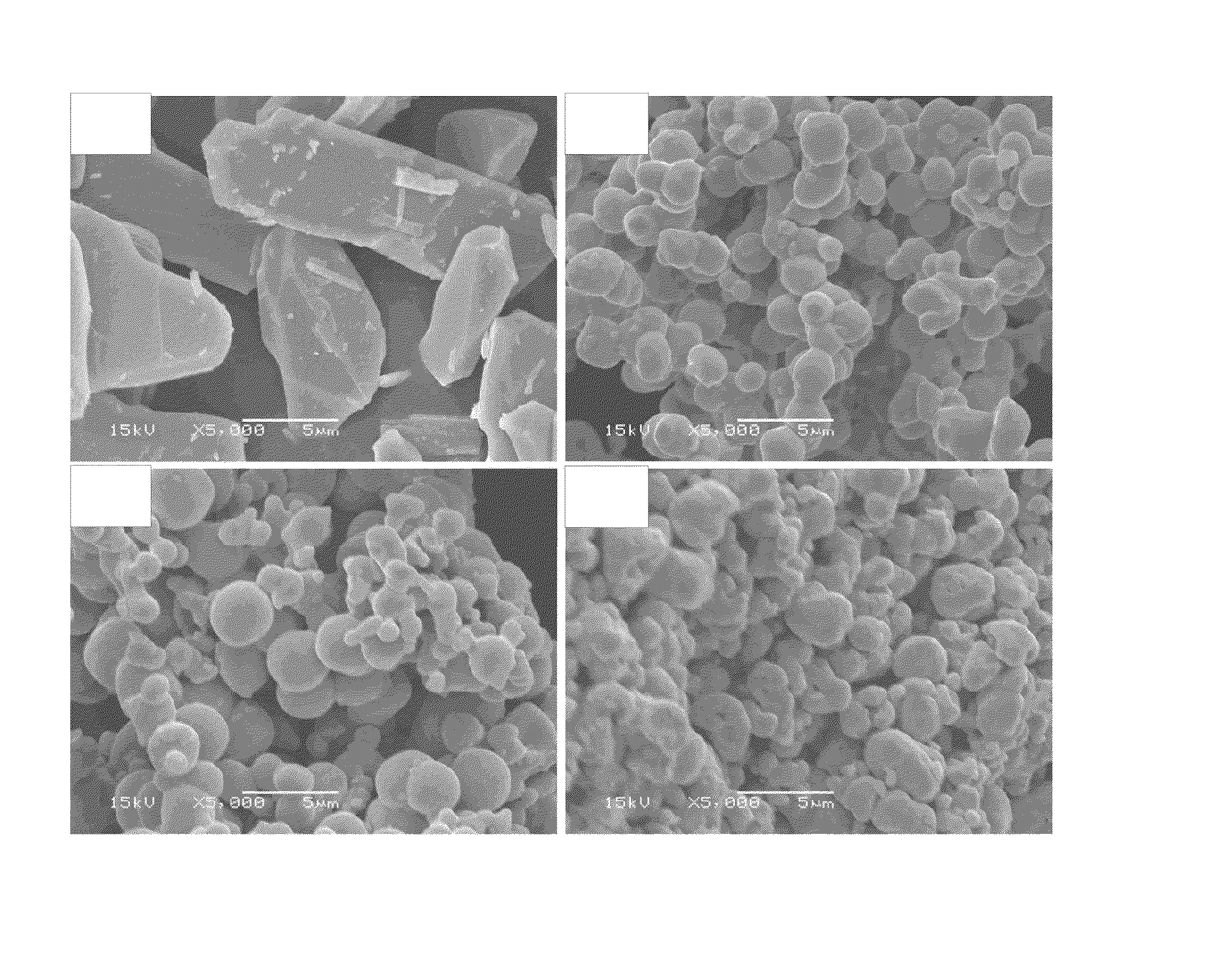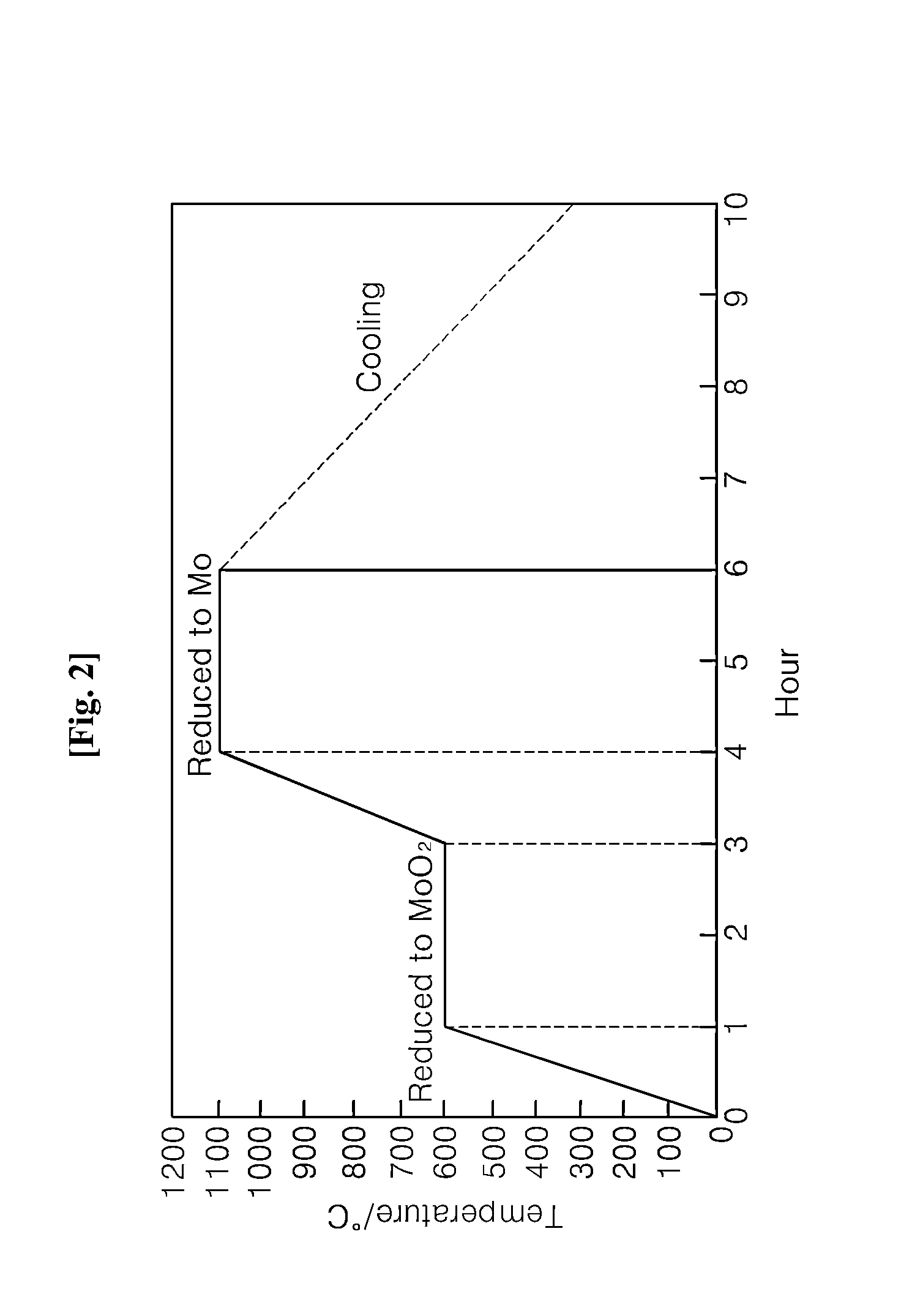Method of producing low oxygen-content molybdenum powder by reducing molybdenum trioxide
- Summary
- Abstract
- Description
- Claims
- Application Information
AI Technical Summary
Benefits of technology
Problems solved by technology
Method used
Image
Examples
Embodiment Construction
[0037]Hereinafter, embodiments of the present invention will be described in detail with reference to accompanying drawings.
[0038]First, reduction or deoxidation reactions employed in the present invention are actually the same as reactions occurring in both of the reduction to molybdenum dioxide (MoO2) from molybdenum trioxide (MoO3) and the reduction to metal molybdenum (Mo) from the MoO2.
[0039]FIG. 1 is a flowchart showing the schematic sequence in the method of producing the low oxygen-content Mo powders by reducing MoO3 according to an example embodiment of the present invention.
[0040]As recognized from FIG. 1, the method of producing the low oxygen-content Mo powders by reducing MoO3 according to the present invention includes a step (step ST110) of charging MoO3 powders and calcium (Ca) powders, a vacuum heat treatment step (step ST120), a separation step (step ST130), and an analysis step (step ST140). The separation step (step ST130) may further include a cleaning step, a f...
PUM
| Property | Measurement | Unit |
|---|---|---|
| Temperature | aaaaa | aaaaa |
| Temperature | aaaaa | aaaaa |
| Temperature | aaaaa | aaaaa |
Abstract
Description
Claims
Application Information
 Login to View More
Login to View More - R&D
- Intellectual Property
- Life Sciences
- Materials
- Tech Scout
- Unparalleled Data Quality
- Higher Quality Content
- 60% Fewer Hallucinations
Browse by: Latest US Patents, China's latest patents, Technical Efficacy Thesaurus, Application Domain, Technology Topic, Popular Technical Reports.
© 2025 PatSnap. All rights reserved.Legal|Privacy policy|Modern Slavery Act Transparency Statement|Sitemap|About US| Contact US: help@patsnap.com



